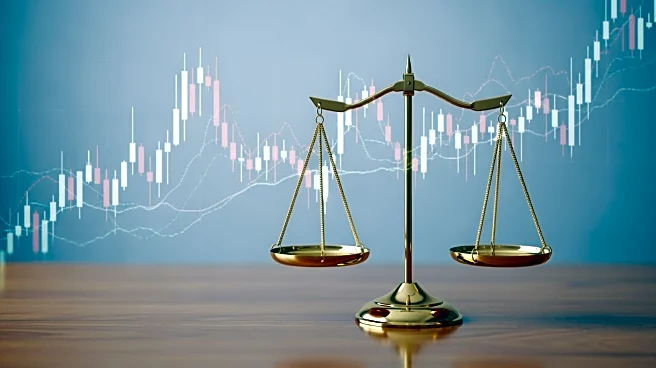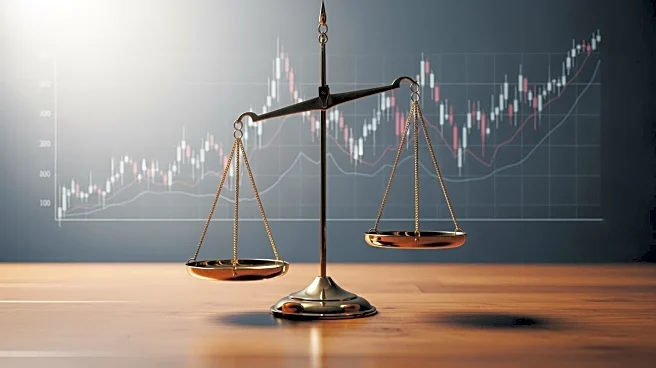What's Happening?
Gold prices have continued to rise, marking a third consecutive session of gains, driven by concerns over the U.S. labor market and the ongoing government shutdown. The ADP non-farm payroll report revealed
significant employment cutbacks, prompting investors to seek safe-haven assets like gold. The shutdown has created a data vacuum, leaving policymakers without essential reports on employment and inflation. The Senate has approved a bill that may end the shutdown, potentially impacting financial markets and monetary policy. The University of Michigan's consumer sentiment survey indicates a decline in confidence, adding to economic concerns.
Why It's Important?
The rise in gold prices reflects broader anxieties about the U.S. economy and potential shifts in monetary policy. The government shutdown has deprived the Federal Reserve and market participants of crucial data, complicating economic assessments. The potential end of the shutdown could lead to a December interest rate cut if official data confirms weakening trends. The situation highlights the reliance on alternative indicators during data shortages and underscores the impact of political impasses on economic stability.
What's Next?
If the government shutdown ends, comprehensive economic data will become available, potentially influencing monetary policy decisions. Market observers suggest that official statistics may corroborate private-sector reports, strengthening the case for an interest rate cut. The resolution of the shutdown could stabilize financial markets, but ongoing labor market concerns may continue to drive investor behavior.
Beyond the Headlines
The synchronized advance in gold and silver prices underscores market anxieties about economic conditions. Silver's volatility alongside gold highlights its role as a companion asset in precious metals markets. The situation illustrates the broader impact of political and economic uncertainties on investment strategies.












